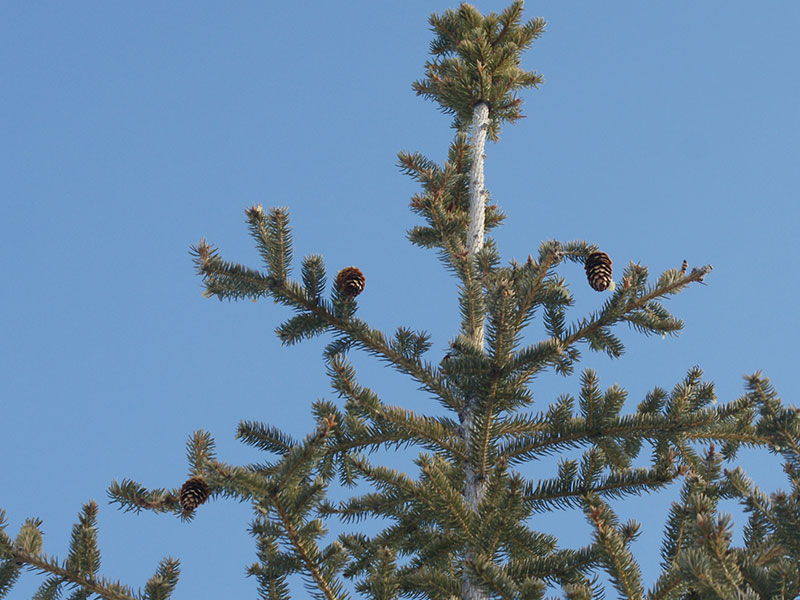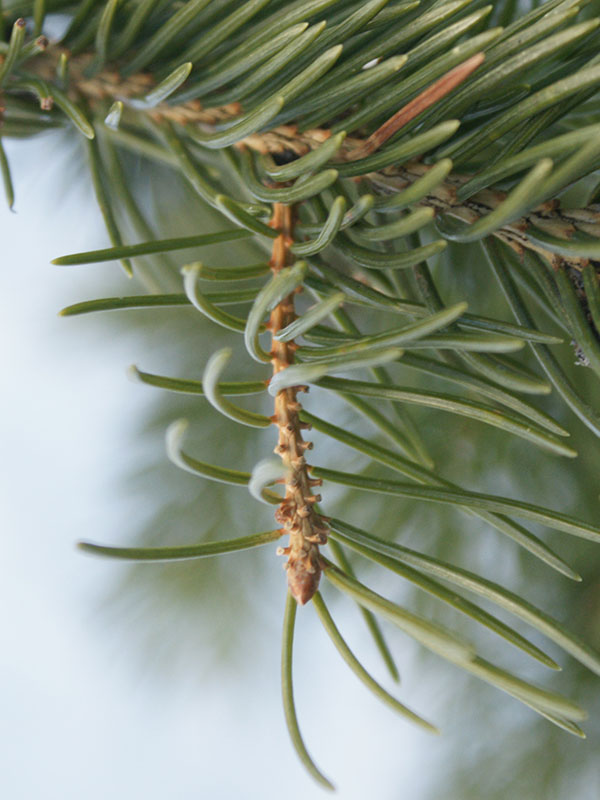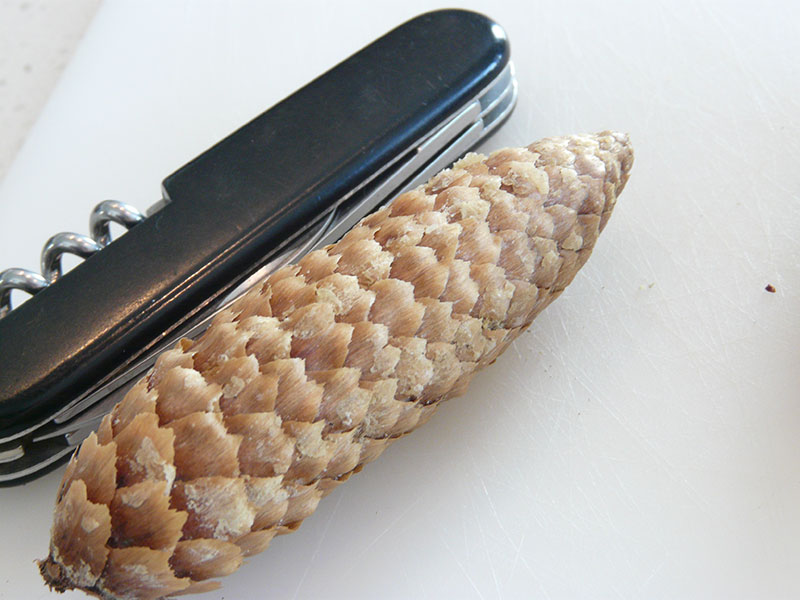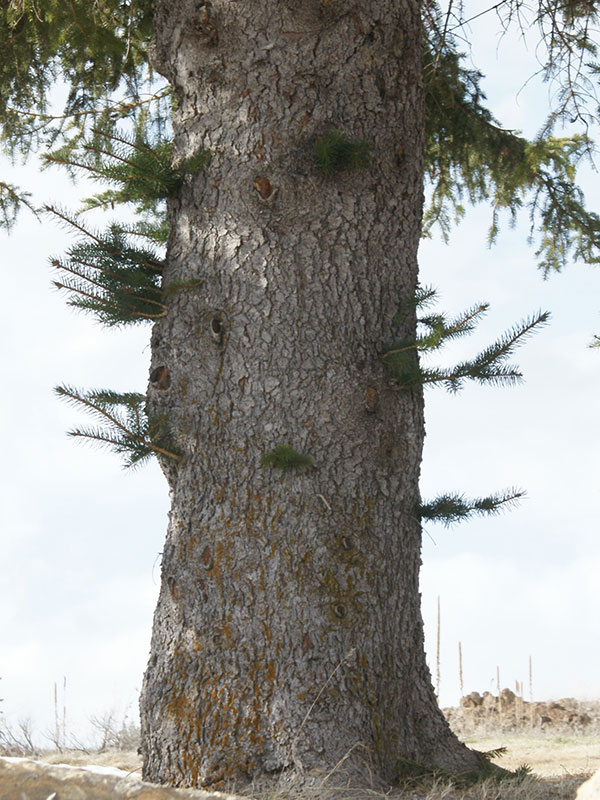Picea pungens / Colorado blue spruce
- conical, layered crown; whorled branches
- frequent epicormic branches; “woolly” look
- stout, yellow-brown twigs with sterigmata (woody pegs)
- cones greater than 2.5″ long
- cone scales stiff at base, diamond shaped, not wavy at tips
- in mixed conifer forests
Also known as: Colorado blue spruce, white spruce, silver spruce, Parry spruce, water spruce
Synonym: Picea parryana
See also: Pine trees, conifers and evergreens; Picea engelmannii / Engelmann spruce
One would think that blue spruce would be about the easiest tree to recognize in the wild; after all, there are plenty of trees in landscaping in the Valley and they are mostly clearly blue. Unfortunately, all of these were clonally reproduced from individuals with that wonderful color. Only about 0.1% of trees growing from their seeds will be blue like that.
Wild trees may look nothing like those; they mostly aren’t even blue except for a short period in early spring. Nevertheless, looking closely at a landscape tree that is clearly blue may help recognize wild trees that aren’t. It will work as well as the description below, no doubt.
Overall, although blue spruce is native to Idaho, it is not widespread. Indeed, it only really occurs in a couple of “fingers” coming in from the east. One of these includes Teton County.
Starting with the form of the trees, the crown is conical with branches growing at several directions from single nodes (i.e. whorled). This gives the trees a somewhat layered look. The twigs are stout and yellow-brown. One thing to look for is the presence of many “epicormic branches”, i.e. small twigs or branches poking out of the bark between the whorls of branches. These give the trees a somewhat “woolly” appearance. There is a photo of this at the end of the gallery.
The needles themselves have nasty sharp points. Mostly, they grow at right angles to the twigs rather than being swept forward like Engelmann spruce. Like all spruces, the needles are attached to the twigs via woody pegs (sterigmata). The needles are also four sided and can roll between your fingers.
Blue spruce cones are, on average, greater than 2.5 inches long (the maximum length for Engelmann). The individual scales are much heavier looking than Engelmann spruce, stiff at the base and diamond shape. Rather than having a wavy margin, the outer edge has a dimple. This, of course, will only make sense after you have seen both cones and can form a good search image. Blue spruce also retains its cones after they are mature but finally drops them in early spring (e.g. April).
Finally, the bark of the Colorado blue spruce is thick, grey-brown and breaking into furrows and rounded ridges. It is only slightly scaly.
Blue spruce mostly grows in moist canyon bottoms, hence one of its common names, water spruce. To be perverse, however, it will sometimes grow on steeper slopes and up to timberline, in with subalpine fir, Douglas fir and Engelmann spruce. So if you are up there and get confused, just look at the view instead.
| Family | |
|---|---|
| Inflorescence type | |
| When? | |
| Where? |





